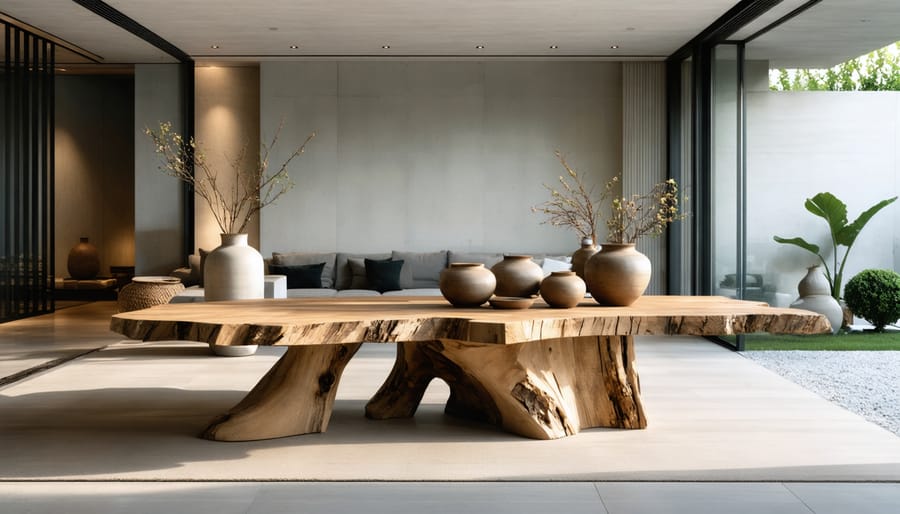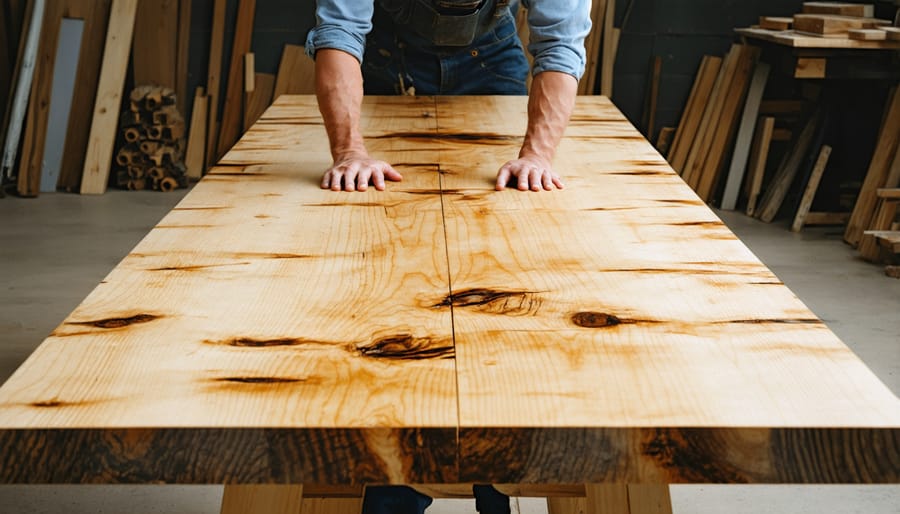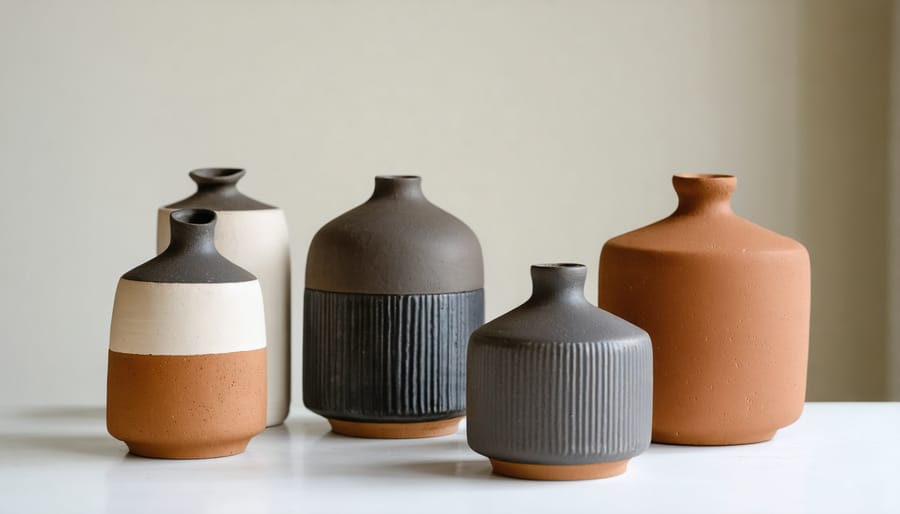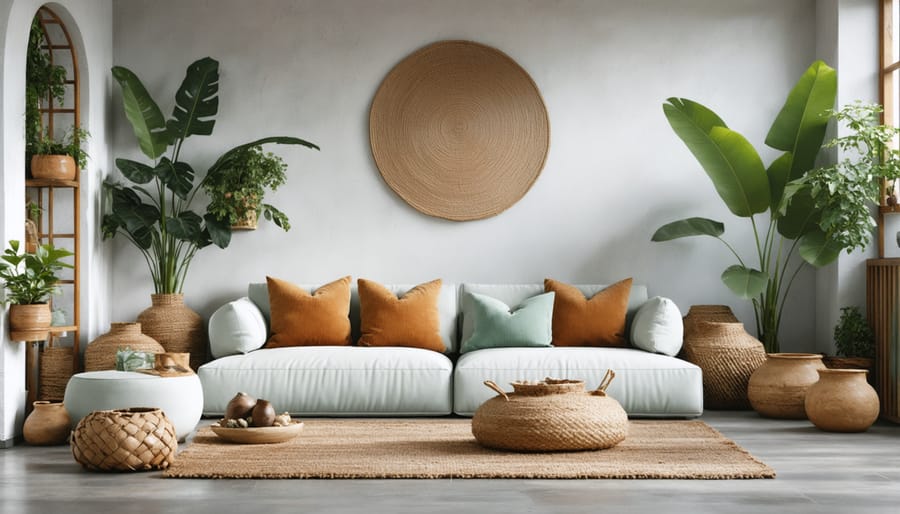
In an era of mass production and digital automation, modern craftsmanship stands as a powerful rebellion against the impersonal. Today’s artisans blend time-honored techniques with cutting-edge technology, creating pieces that speak to both tradition and innovation. From hand-carved furniture enhanced by precision laser cutting to ceramics shaped by centuries-old methods but fired in smart kilns, contemporary craftspeople are redefiting what it means to create with intention.
This renaissance of craftsmanship isn’t merely about producing objects—it’s about fostering a deeper connection between maker and material, between product and user. In urban workshops and rural studios alike, a new generation of makers is challenging the disposable culture of the 21st century, proving that quality, sustainability, and artistic expression can coexist with modern efficiency.
Whether manifested in bespoke furniture, artisanal lighting fixtures, or custom architectural elements, modern craftsmanship represents a conscious choice to value process as much as outcome. It’s a movement that honors the human touch while embracing the possibilities of contemporary tools and techniques, creating pieces that are not just functional, but meaningful—each telling its own story of creativity, skill, and dedication to excellence.
In an era dominated by mass production and digital technology, handcrafted elements serve as anchors of authenticity in modern interiors. These artisanal touches provide a tangible connection to human creativity and skill, offering a refreshing counterpoint to the sleek uniformity of machine-made items.
What makes handcrafted pieces particularly valuable in contemporary spaces is their ability to tell stories through imperfections and unique characteristics. Each hand-carved table, woven textile, or custom ceramic piece carries the mark of its maker, creating an emotional resonance that mass-produced items simply cannot replicate.
The integration of handcrafted elements into modern interiors isn’t just about aesthetics—it’s about creating spaces that feel genuine and lived-in. A hand-thrown pottery collection displayed on minimalist shelving or a traditionally crafted wooden bench paired with contemporary furniture creates compelling visual narratives that bridge past and present.
This authenticity resonates particularly strongly with today’s consumers, who increasingly value transparency and originality in their living spaces. The presence of handcrafted pieces adds layers of character and warmth, transforming sterile environments into personal sanctuaries that reflect individual stories and values.
Modern craftsmanship seamlessly aligns with sustainable design practices, offering a thoughtful approach to creating spaces that are both beautiful and environmentally responsible. Craftcore’s emphasis on quality materials and timeless construction techniques naturally reduces waste and promotes longevity, contrasting sharply with disposable, mass-produced alternatives.
Today’s artisans are increasingly incorporating reclaimed materials, utilizing non-toxic finishes, and sourcing locally to minimize their environmental footprint. This conscious approach extends beyond material selection to include energy-efficient production methods and waste reduction strategies. Many craftspeople now offer repair and restoration services, extending the life of existing pieces rather than contributing to landfill waste.
The investment in well-crafted, sustainable pieces often proves more economical over time, as these items maintain their beauty and functionality for generations. This longevity not only reduces environmental impact but also creates meaningful connections between people and their living spaces, fostering a deeper appreciation for quality craftsmanship and mindful consumption.
Custom furniture pieces represent the pinnacle of modern craftsmanship, where traditional woodworking techniques meet contemporary design sensibilities. These bespoke creations are increasingly sought after by homeowners and designers who value uniqueness and quality over mass-produced alternatives. Each piece tells a story, from the careful selection of sustainable materials to the meticulous attention to detail in its construction.
Modern craftspeople are pushing boundaries by combining time-honored joinery methods with innovative materials and technology. We’re seeing dining tables featuring live-edge wood paired with geometric metal bases, and handcrafted credenzas incorporating LED lighting and hidden charging stations. These pieces perfectly exemplify how traditional craftsmanship can adapt to modern lifestyle needs without sacrificing authenticity.
The investment in custom furniture extends beyond aesthetic appeal. These pieces are built to last generations, often becoming family heirlooms that appreciate in value over time. The ability to specify exact dimensions, materials, and finishes ensures that each piece fits perfectly within its intended space and serves its purpose optimally.
The craftcore movement has particularly embraced this fusion of old and new, with artisans incorporating sustainable practices and locally sourced materials into their work. Many modern craftspeople now offer clients the opportunity to participate in the design process, creating truly personal pieces that reflect both the maker’s expertise and the client’s vision.

In today’s design landscape, artisanal accessories serve as the soul of modern interiors, bringing warmth and character to spaces that might otherwise feel impersonal. These handcrafted elements seamlessly blend with minimalist design elements while adding layers of texture and visual interest.
From hand-thrown ceramic vases to custom-forged metal light fixtures, these pieces tell stories through their subtle imperfections and unique characteristics. Artisans are increasingly incorporating sustainable materials and traditional techniques to create contemporary pieces that resonate with modern sensibilities. Popular items include woven wall hangings, hand-carved wooden bowls, and blown glass sculptures that serve both functional and decorative purposes.
The impact of these handcrafted accessories extends beyond mere aesthetics. They create focal points that draw the eye and spark conversation, while also supporting local craftspeople and preserving traditional skills. Many homeowners report that incorporating artisanal pieces helps create a more authentic and lived-in atmosphere, making spaces feel more welcoming and personally meaningful.
When selecting artisanal accessories, consider pieces that complement your existing decor while making a statement of their own. Look for items that showcase exceptional craftsmanship through details like hand-stitching, hammer marks, or natural variations in materials. These subtle touches add depth and character that mass-produced items simply cannot match.

Texture plays a pivotal role in modern craftsmanship, adding depth and character to contemporary spaces through thoughtfully incorporated handcrafted elements. The interplay of smooth and rough surfaces creates visual and tactile interest that machine-made items simply cannot replicate. From hand-woven textiles draped over sleek furniture to rough-hewn wooden beams contrasting with polished concrete floors, these textural juxtapositions tell a story of human touch meeting modern design.
Today’s craftspeople are experimenting with innovative combinations of materials to achieve striking textural effects. Hand-hammered metals paired with smooth glass surfaces, or raw clay vessels displayed against minimalist white walls, exemplify how traditional techniques can enhance modern aesthetics. The imperfections inherent in handcrafted pieces – subtle variations in weave, gentle undulations in carved wood, or the distinctive marks of hand-thrown pottery – create organic rhythm in otherwise uniform spaces.
These textural elements serve both practical and aesthetic purposes. Beyond their visual appeal, they help absorb sound, create warmth in minimal environments, and provide tactile engagement that encourages interaction with the space. The strategic placement of handcrafted textures can transform sterile rooms into inviting environments that feel both contemporary and connected to traditional craftsmanship heritage.
Through thoughtful curation of textural elements, modern spaces maintain their clean lines while gaining the soul and character that only handcrafted pieces can provide.
Achieving the perfect balance between traditional craftsmanship and modern design requires thoughtful consideration and strategic placement. The key is to blend old-world charm with contemporary elements while maintaining visual harmony throughout your space.
Start by selecting statement handcrafted pieces that can serve as focal points, such as a hand-carved wooden dining table or artisanal ceramic lighting fixtures. These pieces work best when surrounded by clean, modern lines that allow their craftsmanship to shine. Consider pairing a traditionally woven tapestry with minimalist furniture, or displaying hand-thrown pottery on sleek floating shelves.
Color plays a crucial role in this fusion. Traditional craftwork often features warm, rich tones that can be balanced with contemporary neutral palettes. For example, a vintage hand-knotted rug with deep reds and blues can anchor a room furnished with modern grey and white pieces.
Textures are equally important in creating this balance. Incorporate handwoven textiles, rough-hewn wood, and hammered metals alongside smooth, modern surfaces like glass and polished concrete. This contrast creates visual interest while highlighting the unique characteristics of both styles.
Remember that lighting can dramatically impact how crafted elements are perceived. Use modern lighting solutions to highlight the intricate details of handcrafted pieces, creating purposeful focal points that draw attention to the artisanal quality while maintaining a contemporary atmosphere.

In modern interior design, handcrafted elements serve as powerful focal points that anchor a room’s aesthetic while telling a unique story. The key to successfully creating bold statement pieces lies in strategic placement and thoughtful integration with existing décor.
Consider positioning a hand-carved wooden dining table as the centerpiece of your dining room, allowing its natural grain patterns and artisanal details to command attention. In living spaces, a custom-built entertainment center or restored vintage cabinet can transform a plain wall into an engaging visual story. These pieces work best when given breathing room – avoid cluttering the surrounding area with competing elements.
Lighting plays a crucial role in highlighting craftwork. Position adjustable spotlights or pendant lamps to cast intentional shadows that emphasize texture and detail. For maximum impact, limit yourself to one or two statement pieces per room. This prevents visual overwhelm and ensures each handcrafted item receives the attention it deserves.
Color contrast can also enhance focal points. A hand-woven tapestry against a neutral wall or a custom-built wooden bench against crisp white tiles creates immediate visual interest. Remember that negative space around these pieces is just as important as the items themselves – it creates a frame that draws the eye naturally to your carefully chosen craftwork.
Preserving handcrafted elements requires a thoughtful approach and regular maintenance to ensure their longevity. For wooden furniture, the key is maintaining proper humidity levels, typically between 40-50%, to prevent warping and cracking. Use a humidifier during dry winter months and a dehumidifier during humid summers to protect your valuable pieces.
Regular dusting with a soft, lint-free cloth prevents particle buildup that can scratch surfaces over time. For deeper cleaning, avoid harsh chemical cleaners that can damage natural finishes. Instead, opt for gentle, pH-neutral solutions specifically formulated for your item’s material. Always test cleaning products on a small, hidden area first.
Natural oils and waxes are excellent for maintaining wooden surfaces. Apply furniture oil every 6-12 months to nourish the wood and prevent drying. For metal crafted pieces, prevent oxidation by keeping them dry and occasionally applying a protective coating. Handwoven textiles should be rotated periodically to ensure even wear and protected from direct sunlight to prevent fading.
When displaying handcrafted items, consider their environmental needs. Keep precious pieces away from heating vents, air conditioning units, and windows where temperature fluctuations can cause damage. For ceramic works, use felt pads under bases to prevent scratches and provide stability.
Professional restoration may be necessary for valuable pieces showing signs of wear. Look for specialists who understand traditional crafting techniques and can maintain the piece’s authenticity while addressing damage. Document your items’ original condition and keep records of any restoration work performed.
For daily care, educate household members about proper handling techniques. Use coasters under drinks, lift items instead of dragging them, and avoid placing hot objects directly on surfaces. These simple habits significantly extend the life of handcrafted elements while preserving their beauty for future generations to enjoy.
Modern craftsmanship continues to captivate and inspire, bridging the gap between traditional artisanal skills and contemporary design sensibilities. Its enduring appeal lies not just in the aesthetic value it brings to spaces, but in the authentic connection it creates between makers and users. As our world becomes increasingly digital, the tactile nature of handcrafted elements provides a much-needed counterbalance, bringing warmth and character to modern interiors.
The resurgence of craftsmanship in interior design reflects a broader cultural shift towards sustainability, authenticity, and mindful consumption. Homeowners and designers alike recognize that well-crafted pieces not only last longer but also tell stories that mass-produced items simply cannot match. This appreciation for quality workmanship has created a thriving ecosystem where traditional techniques evolve alongside innovative approaches.
Looking ahead, modern craftsmanship shows no signs of waning. Instead, it continues to adapt and flourish, incorporating new technologies while preserving time-honored skills. The future of interior design will likely see an even greater emphasis on bespoke elements that combine artisanal excellence with contemporary functionality. As we continue to seek spaces that reflect both our personal stories and our commitment to quality, modern craftsmanship remains an invaluable tool in creating meaningful, lasting environments that truly feel like home.